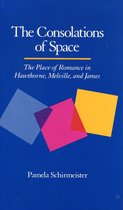Space Between Words The Origins of Silent Reading
Afbeeldingen
Sla de afbeeldingen overArtikel vergelijken
- Engels
- Paperback
- 9780804740166
- 01 januari 2000
- 504 pagina's
Samenvatting
Reading, like any human activity, has a history. Modern reading is a silent and solitary activity. Ancient reading was usually oral, either aloud, in groups, or individually, in a muffled voice. The text format in which thought has been presented to readers has undergone many changes in order to reach the form that the modern Western reader now views as immutable and nearly universal. This book explains how a change in writing—the introduction of word separation—led to the development of silent reading during the period from late antiquity to the fifteenth century.
Over the course of the nine centuries following Rome’s fall, the task of separating the words in continuous written text, which for half a millennium had been a function of the individual reader’s mind and voice, became instead a labor of professional readers and scribes. The separation of words (and thus silent reading) originated in manuscripts copied by Irish scribes in the seventh and eighth centuries but spread to the European continent only in the late tenth century when scholars first attempted to master a newly recovered corpus of technical, philosophical, and scientific classical texts.
Why was word separation so long in coming? The author finds the answer in ancient reading habits with their oral basis, and in the social context where reading and writing took place. The ancient world had no desire to make reading easier and swifter. For various reasons, what modern readers view as advantages—retrieval of reference information, increased ability to read “difficult” texts, greater diffusion of literacy—were not seen as advantages in the ancient world. The notion that a larger portion of the population should be autonomous and self-motivated readers was entirely foreign to the ancient world’s elitist mentality.
The greater part of this book describes in detail how the new format of word separation, in conjunction with silent reading, spread from the British Isles and took gradual hold in France, Germany, Italy, and Spain. The book concludes with the triumph of silent reading in the scholasticism and devotional practices of the late Middle Ages.
Productspecificaties
Inhoud
- Taal
- en
- Bindwijze
- Paperback
- Oorspronkelijke releasedatum
- 01 januari 2000
- Aantal pagina's
- 504
- Illustraties
- Nee
Betrokkenen
- Hoofdauteur
- Paul Saenger
- Tweede Auteur
- Saenger Paul
- Hoofduitgeverij
- Stanford University Press
Overige kenmerken
- Editie
- 1 New ed
- Extra groot lettertype
- Nee
- Product breedte
- 152 mm
- Product hoogte
- 3.20 cm
- Product lengte
- 241 mm
- Studieboek
- Ja
- Verpakking breedte
- 153 mm
- Verpakking hoogte
- 32 mm
- Verpakking lengte
- 228 mm
- Verpakkingsgewicht
- 0.74 kg
EAN
- EAN
- 9780804740166
Je vindt dit artikel in
- Categorieën
- Taal
- Engels
- Boek, ebook of luisterboek?
- Boek
- Studieboek of algemeen
- Algemene boeken
- Beschikbaarheid
- Leverbaar
Kies gewenste uitvoering
Prijsinformatie en bestellen
De prijs van dit product is 51 euro en 92 cent.- Prijs inclusief verzendkosten, verstuurd door bol
- Ophalen bij een bol afhaalpunt mogelijk
- 30 dagen bedenktijd en gratis retourneren
- Dag en nacht klantenservice
- Vandaag nog in huis (bestel ma-vr voor 12:00, bezorging tussen 17:00 en 22:00)
- Doordeweeks ook ’s avonds in huis
- Ook zondag in huis (bestel voor za 23:59)
Rapporteer dit artikel
Je wilt melding doen van illegale inhoud over dit artikel:
- Ik wil melding doen als klant
- Ik wil melding doen als autoriteit of trusted flagger
- Ik wil melding doen als partner
- Ik wil melding doen als merkhouder
Geen klant, autoriteit, trusted flagger, merkhouder of partner? Gebruik dan onderstaande link om melding te doen.








